Why French Conceptual Artist Bernar Venet Is Selling Paintings He’s Never Seen
By Keshav Anand“I had this idea – I wanted to stage an exhibition after my death. Five years later: Bernar Venet: New Works. He’s dead, but there’s new work. And then I thought, actually, I’m in too much of a hurry!”
French artist Bernar Venet is laughing but the idea is completely serious. With the help of code, he’s found a way to continue making work after his passing. I am sitting across from him at his desk. We’re in Le Muy, Provence, inside a converted factory he bought and restored in the 1980s. This is where he lives, works, and thinks, where he walks among the arcs and angles of weathered steel that populate the sprawling sculpture park he’s meticulously cultivated for over four decades.
Venet’s illustrious career has taken him all over the world – he tells me he was in Tokyo last week and is off to the Middle East in a few days. He’s 84 but you couldn’t tell. The artist lived mainly in New York since 1966 and now resides in Le Muy, a couple of hours from where he was born in Château Arnoux. His works are held in the collections of the Centre Pompidou, MoMA and the Guggenheim, LACMA, and Seoul’s National Museum of Modern Art, among countless other institutions. Whizzing past his monumental steel sculptures in a golf cart before lunch is served, I think back to my first experience of the artist’s work – it was in the historic gardens of Cliveden in Berkshire in 2017. Seeing his sculptures backdropped by manicured lawns and blue skies feels familiar.
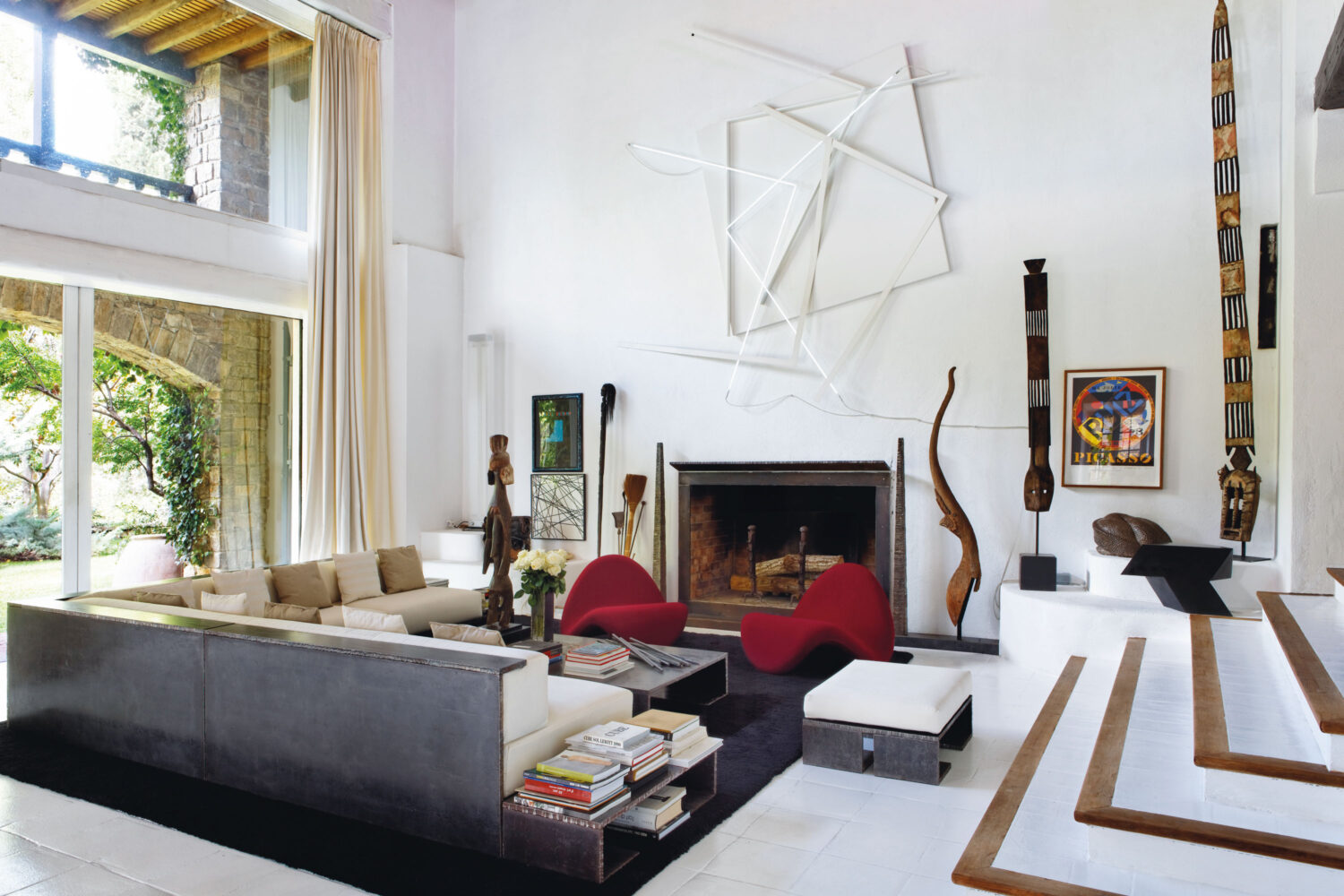
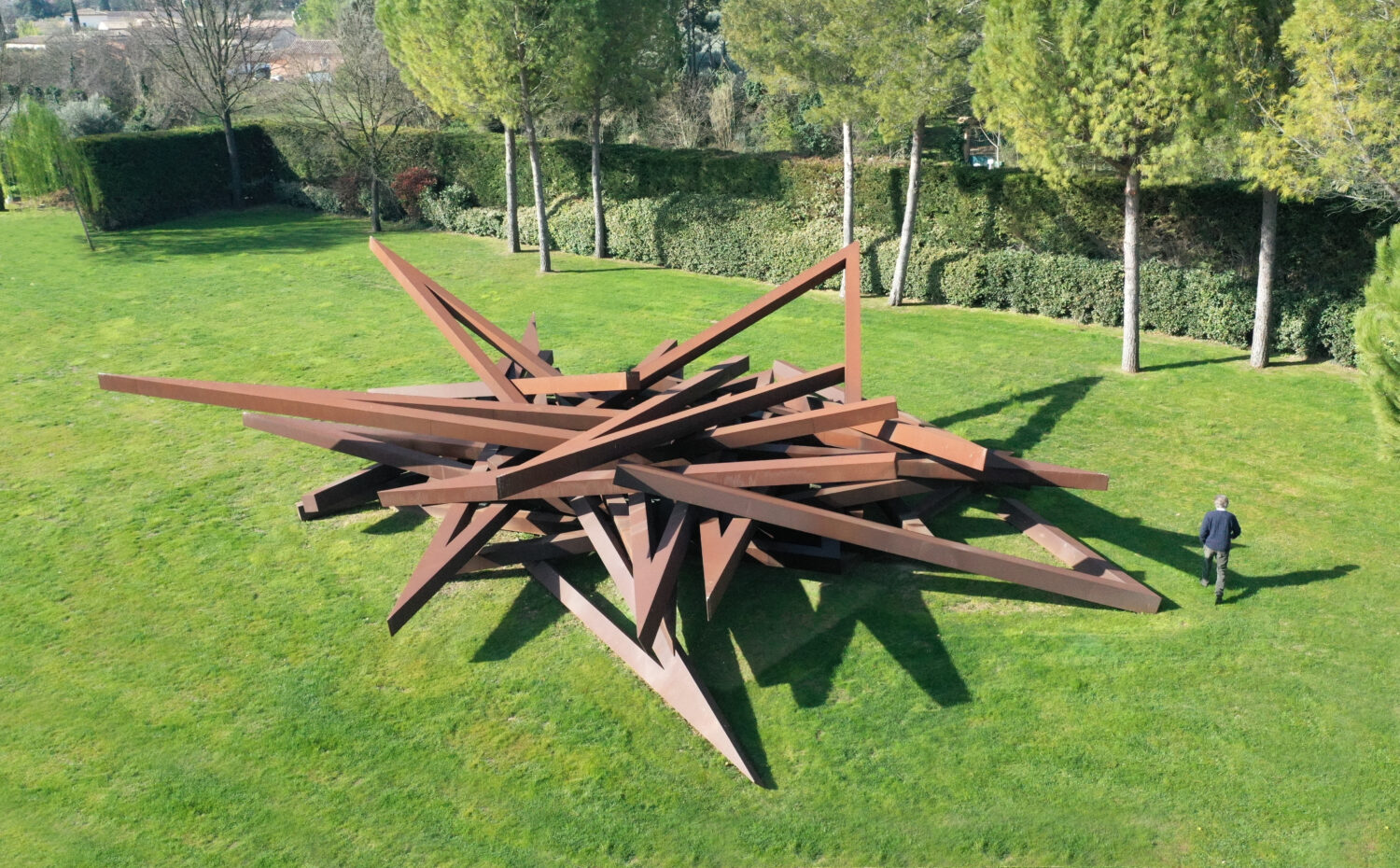
I am here in Provence to talk with Venet about When Steel Dreams of Code, his new exhibition of generative paintings at London gallery Waddington Custot – as well as to see his remarkable home and art collection. At first glance, his new paintings feel like a departure. But maybe not. “The idea came after some young coders from Berlin contacted me,” Venet explains. “They had seen a video about my 1970 piece at MoMA – a generative television work – and said, ‘Bernar, your whole career has been generative. The charcoal pile. The audio lecture. The indeterminate lines. It’s time to return to this.’ I hadn’t thought about it like that, but they were right. So I said yes. Let’s do it.”
What followed was a six-month collaboration, of sorts. “I gave the parameters: use angles, any colours, let the forms collapse on screen. I said: ‘I want it to feel completely unexpected. Let the machine surprise me.’ But the coder is not my partner. AI is not a collaborator. It’s a tool. Like a brush. Like a ruler. Yes, someone writes the code, but they’re not the artist. I am. I set the rules. The concept is mine.”
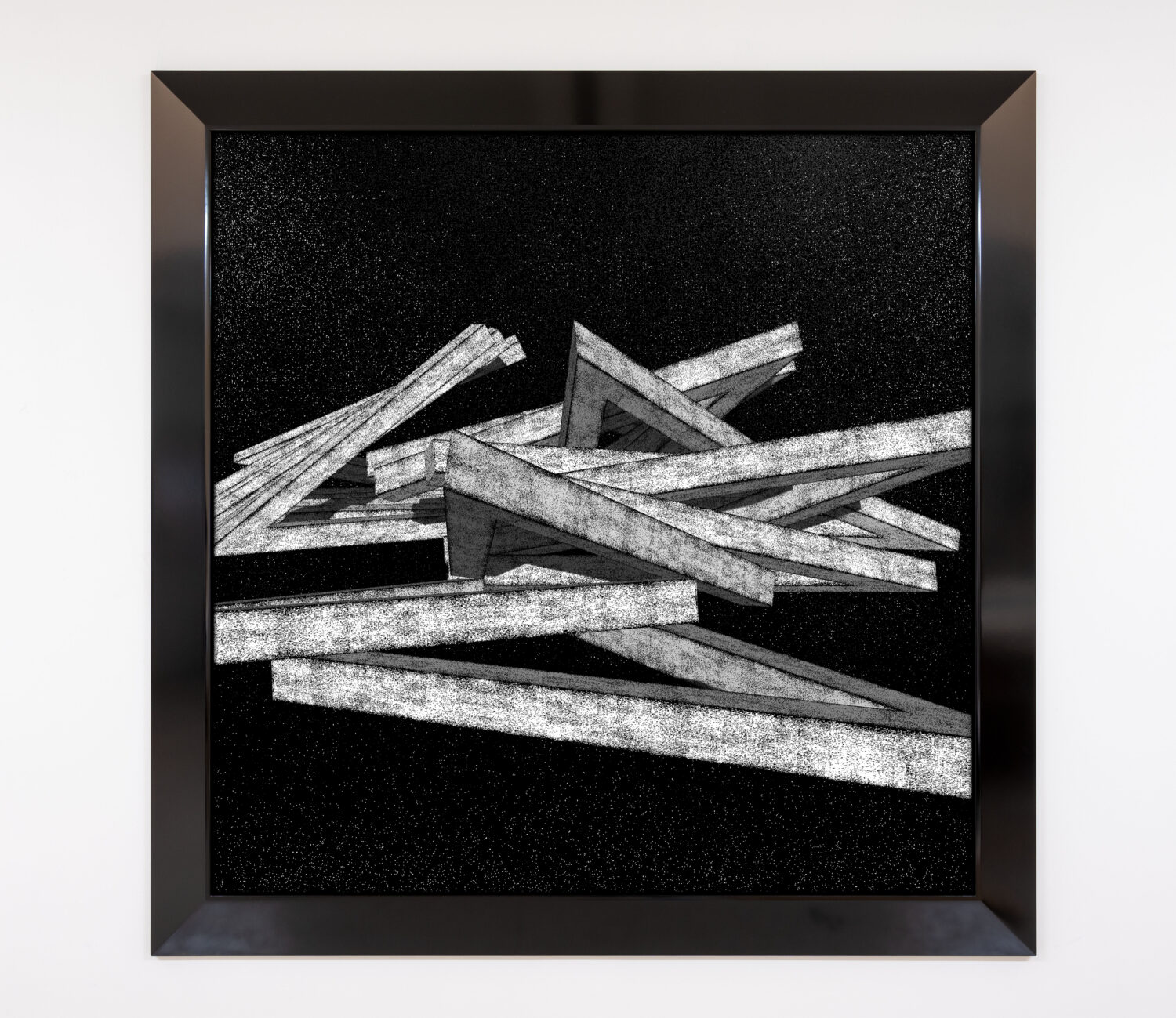

The Generative Angles Paintings, as the works are called, begin with code but end in paint. The images, generated by algorithm, are printed and painted by a robotic process in Cannes. “I told the coder: ‘You will press the button ten times. That’s it. Ten images. I don’t want to see them. Don’t send them to me.’ The machine paints them. My assistants stretch and frame them. I don’t touch them. I don’t correct anything. The first time I see them will be at the opening.” And for Venet, this isn’t a gimmick. It’s the culmination of decades of thought. “Some people laugh at this idea. They think I’m joking. But I’m not. I want to remove the hand. Remove the ego. I’m interested in ideas – not in aesthetics, not in intuition. Michelangelo said: ‘Art is done with the brain, not the hand.’ That’s my position too.”
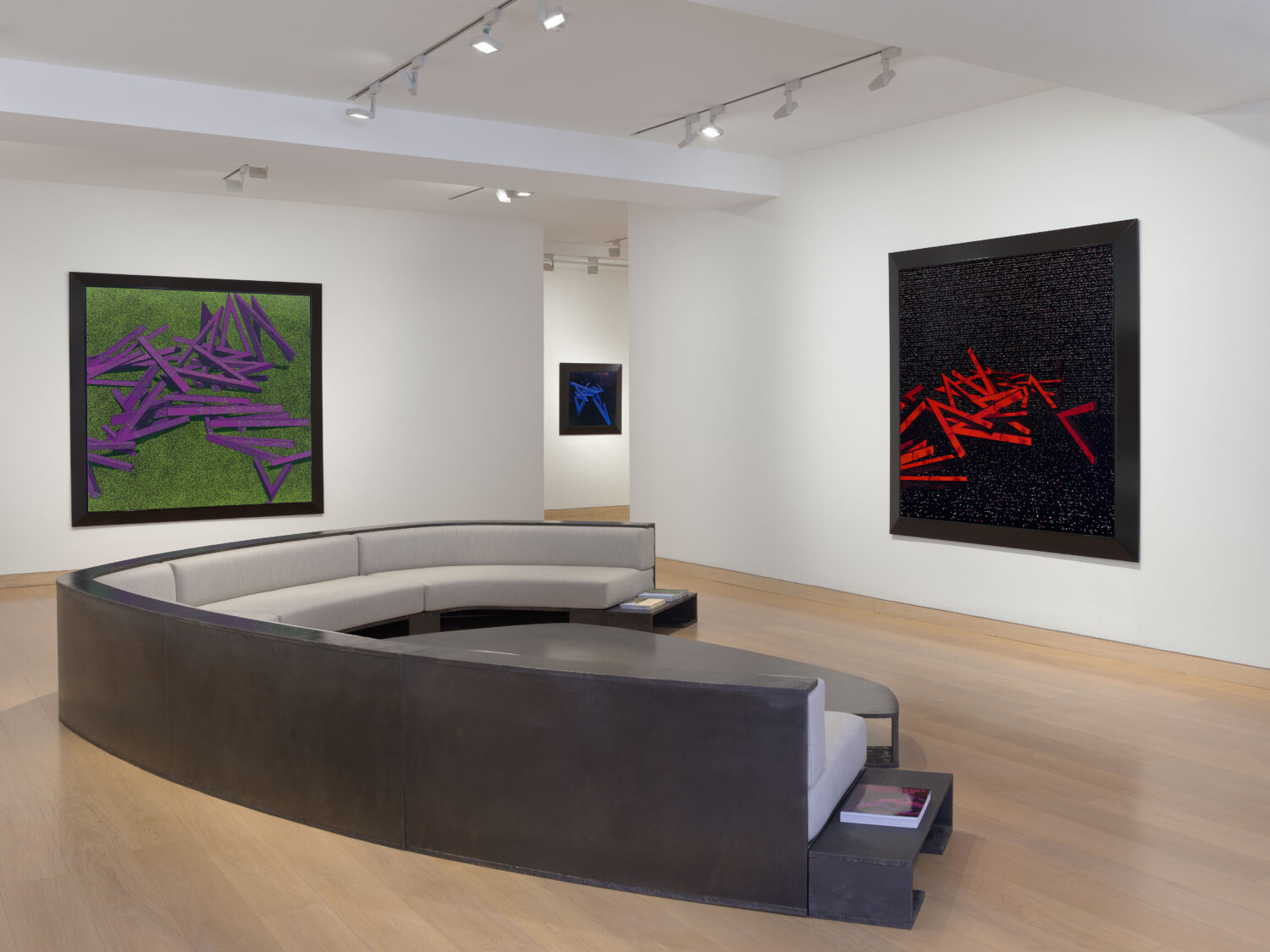
This stance has defined Venet’s career from the beginning. “In 1966, I made paintings that were just mathematical diagrams. My friends said, ‘That’s not art – it’s maths. Put in some colour, change the numbers, make it more personal.’ But I didn’t want personal. I didn’t want expressive. I wanted objectivity. If I could impose that kind of work in the art world, it would shift the paradigm… Even earlier, when I made Tas de charbon, the charcoal pile, that work was never the same twice. You don’t install it. You just make a pile. And with the right certificate, it’s a real Bernar Venet. It was already generative. The real piece doesn’t exist. It’s a concept.”
It turns out this approach permeates his enormous steel works too. “When I make the arcs, I don’t compose them like a classical sculptor. I don’t model. I don’t plan. I work with gravity. I place them in a fragile position, then I push – and let them fall. The collapse creates the sculpture. I don’t control the final form. It’s the moment that decides. That’s the artwork.” Walking through the sculpture park at Le Muy, you see this principle in action. Dozens of rusted steel forms – arcs, lines, angles – lie where they have landed, like drawings against the grass. “Normally sculpture is made with intuition or calculation,” he says. “But I want something else. I want unpredictability.”
Venet is steadfastly uninterested in repetition – not even of his own ideas. “Each year I ask myself: what can I do that I haven’t done yet? Because there is so much to invent. I criticise artists who find a style and repeat it forever. Then you’re no longer an artist – you’re a decorator. That’s not why I’m here.”
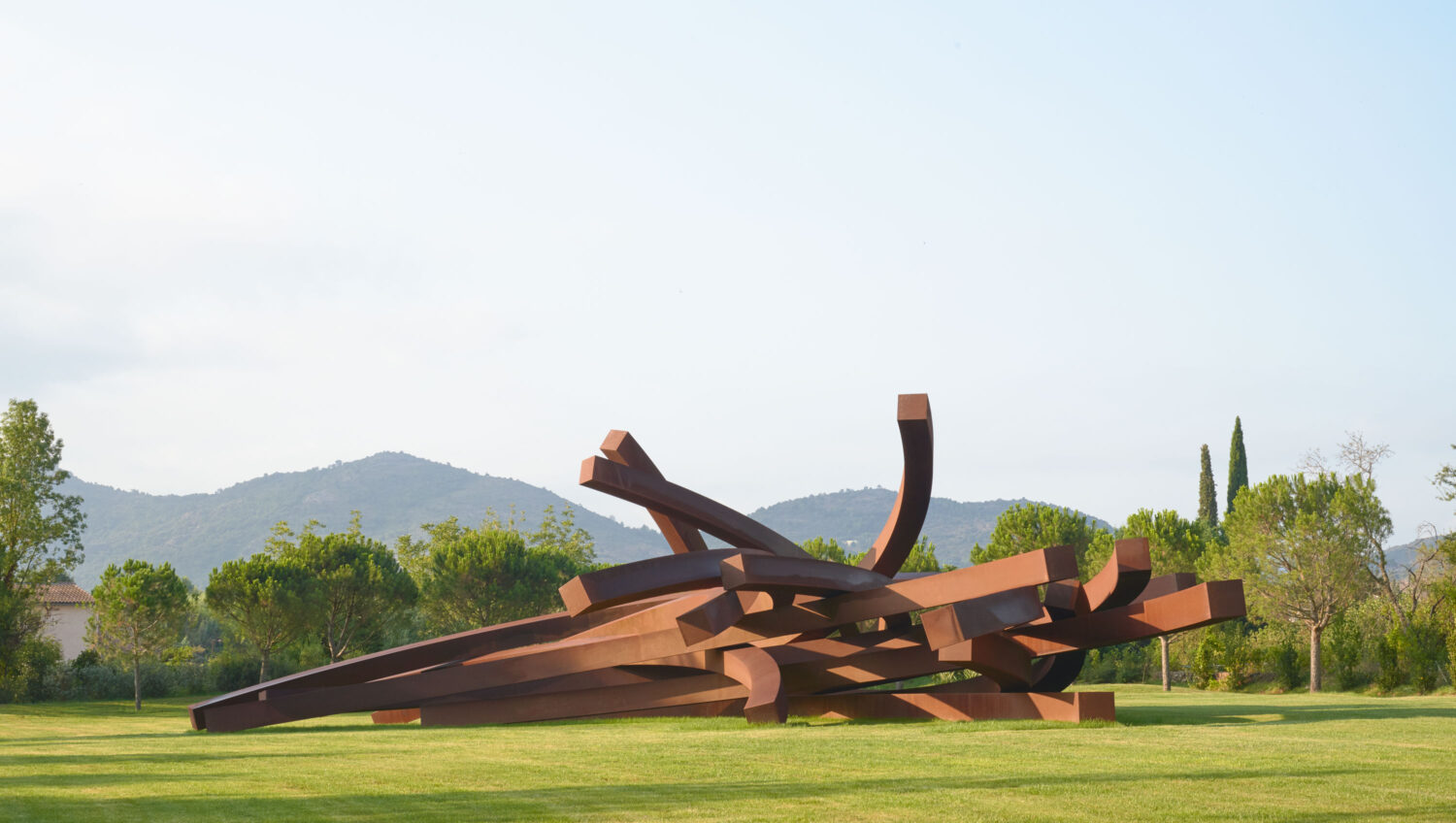
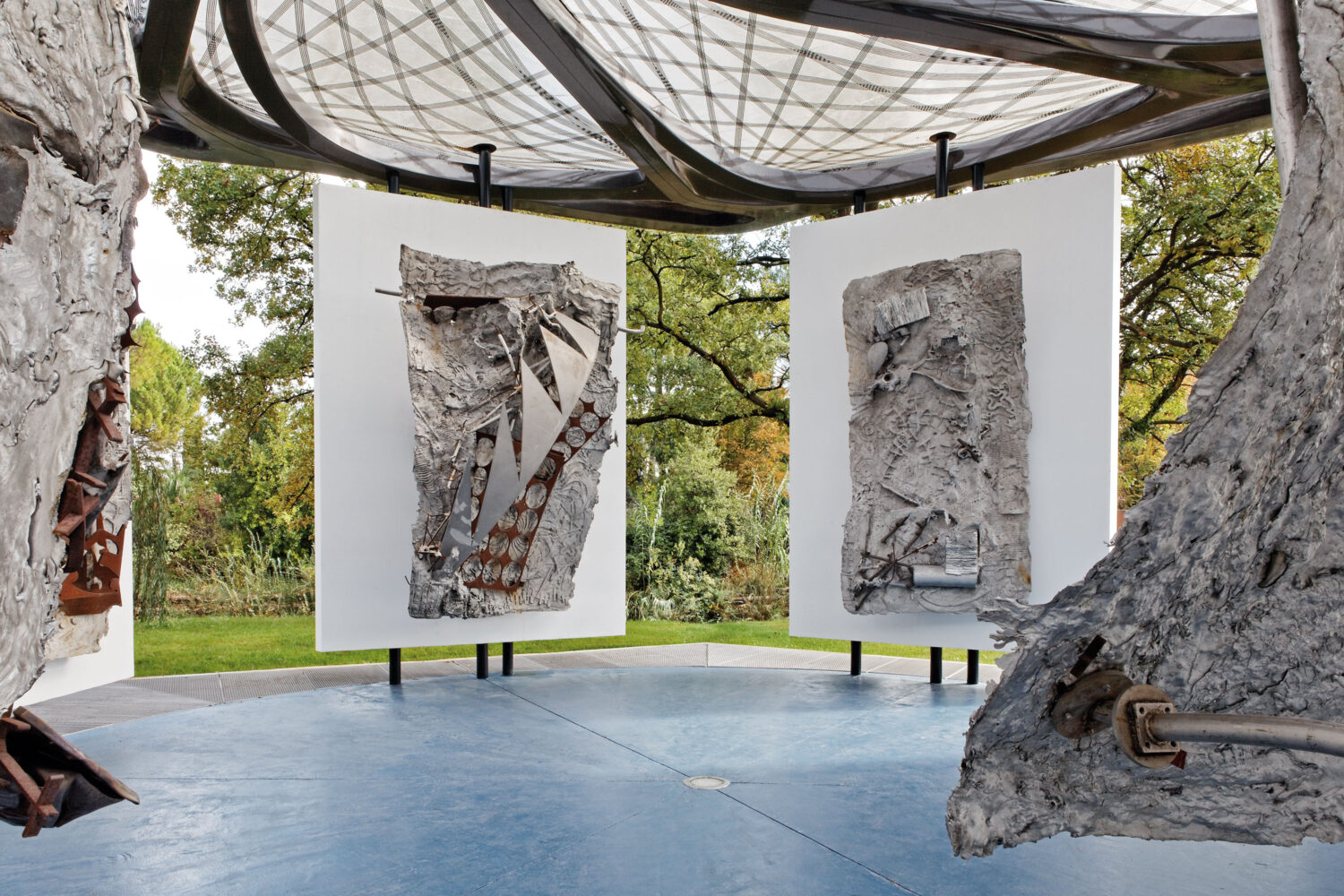
Alongside his own works, the artist’s property in Le Muy is filled with pieces by his friends, peers and those he admires, from Donald Judd, James Turrell and Anish Kapoor to Degas and Picasso. The restless refusal to settle, an impulse that propels his practice, seems to have played a role in shaping his extraordinary collection too. “I never thought of myself as a collector,” he shares. “I just loved art. When I was young, I had nothing – no money, no furniture. But I bought a Judd for $3,000 – all the money I had. My kitchen was awful, my bathroom was a disaster. But that Judd meant more than comfort.”
Today, Venet’s collection, much of it viewable at the Venet Foundation, is one of the most unique in Europe. “At first, I never thought about a foundation. That felt too pretentious… But then Frank Stella came here and made a chapel. We did a show with Judd, Carl Andre, Sol LeWitt. And I realised this isn’t about me. It’s about preserving something. About giving something back. When I say I grew up poor, that’s not strong enough. We were destitute. My father had a brain tumour. My mother had four children. She couldn’t feed us. Two of my brothers were sent to a seminary. I was sent to a farm. So now, when I look at what I’ve built – the foundation, the collection, the park – I see it as a way of repaying a debt.”
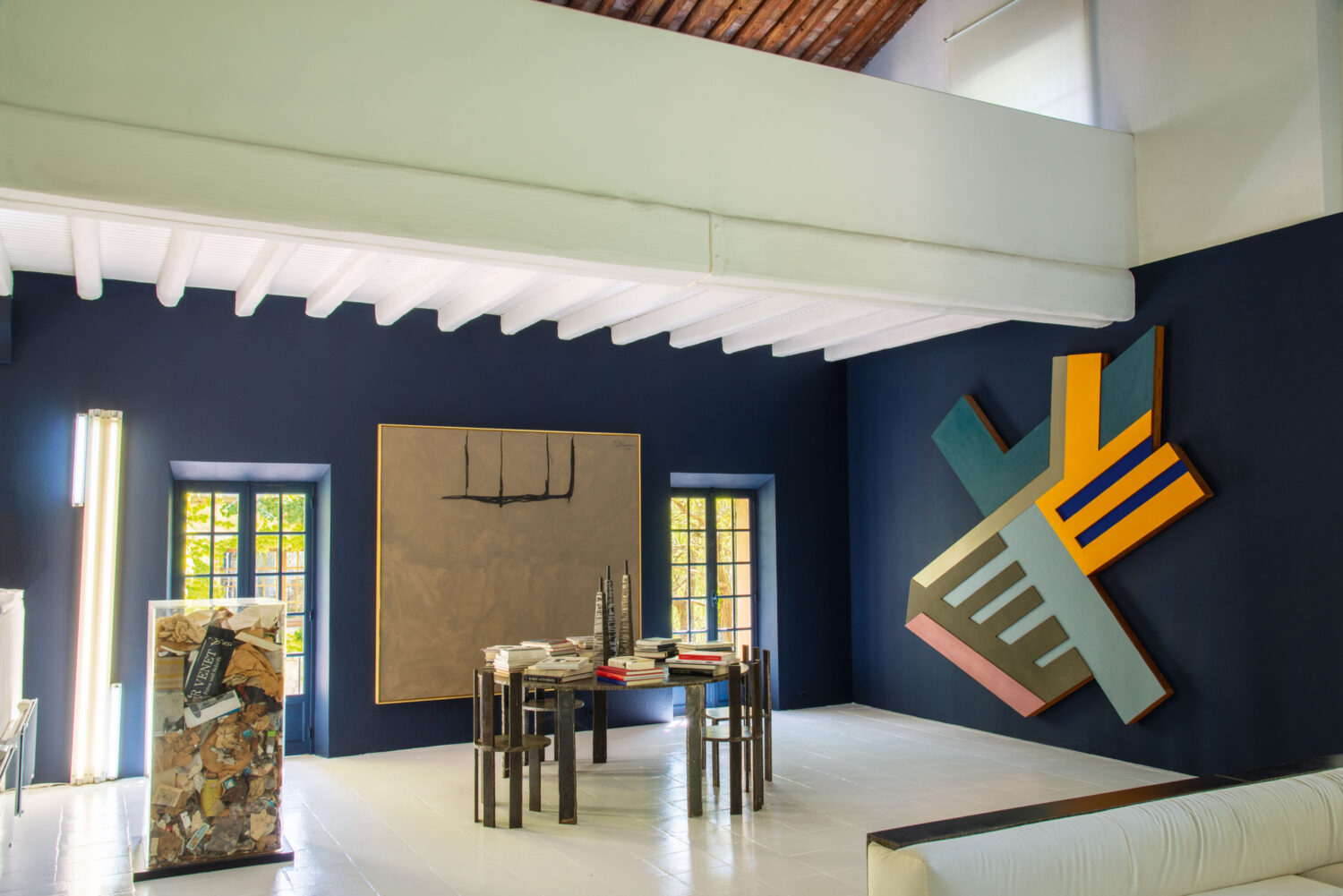
The Foundation, officially established in 2014, includes galleries, archival storage, his living quarters, and a sculpture park that stretches across more than 17 acres. “I bought the land bit by bit. I expanded. I rebuilt everything myself, with the help of friends and a few assistants. It’s cost me everything. All my money. All my energy. But it’s worth it. It will outlive me.”
Still, even here, in this place of permanence, Venet is focused on change. “Even with the arcs, I’m thinking of doing some pieces using AI. But the work must evolve. Otherwise, what’s the point?” And it’s this forward thrust, the refusal to stay still, that ties together his life’s work. Whether using coal, steel, sound, or code, Venet’s art emerges from a consistent intellectual framework rooted in evolution. “With all due respect Keshav, if I had an idea right now, I’d leave you and go make it. No waiting. That’s why this park is full of new works. If it’s worth doing, do it now.”
Bernar Venet: When Steel Dreams of Code is on view at Waddington Custot, London from 6 June–19 July 2025.
Feature image: The New Gallery; (L-R) Bernar Venet, Three Indeterminate Lines, 1996; Bernar Venet, Diagonale de 74.3˚, 2006 Photo: Antoine Baralhe. © Bernar Venet, ADAGP Paris, 2025